
Top five slimline child car seats
Keeping your children safe is the top priority for any parent - and that...
Browse over 9,000 car reviews

'What to look for when shopping for a family car' in Australia.'
What a seemingly innocuous question that opens a Pandora's box worth of considerations! Gone are the days where you simply found the biggest wagon or 4WD you could, strapped the nuggets in and drove off the car lot. There are some things to consider when you’re shopping for the family car.
You might consider the usability of the interior space, the storage options with the boot or how the seats fold down, especially if you need to store recreational gear.
Do you have a boat or trailer? If the answer is yes, then you’ll be wanting to know towing capacities and whether there are any additional safety features (assisted braking or added camera systems). Of course, fuel economy is often a big consideration considering the rising costs of fuel.
Every family will have different needs and wants. You might need the space of a big boot or prefer to be able to park it in tight city streets.
Whatever it is you’re looking for, write down your list of needs and wants. There is a difference!
You may want heated seats but do you need them? If you live in an area that regularly sees frost in the mornings or snow fall in the winter, then it’s probably a need but if you’re living in Cairns, why are you considering heated seats?!
After making your list, underline the non-negotiables: if you have three harnessed children, then you need to be able to fit three harnessed child seats in the vehicle you choose etc. While the below lists are certainly not exhaustive, hopefully, they help you in your search for your next family car. Happy hunting!

So, you’re tight on space and need something a little more compact? Never fear, there are plenty of families in the same boat… err, car.
The biggest questions to ask yourself is whether you can physically fit. That might seem like an obvious consideration but it requires a little more thought than whether you can fit your booster seat through the back door.
The way to tackle that is to think of what you’ll be using your car for. Do you regularly transport Granny to her appointments after doing the school runs? Or are the kids in vigorous sporting pursuits that require lots of gear? Do you have to fit a 0-4 rearward facing child seat? If so – take the seat with you to the dealership and physically put it in, then sit in front of it! Are you comfortable? Or are you smooshed into the dashboard?
Consider too, how difficult it is to get in and out of both rows. Are you folding in half or hitting your head because the back doors have narrow apertures?
The best small family cars should make good use of their internal storage space. Think clever little cubbies or under seat storage, or a boot floor than can be readjusted to give greater depth.
Fuel consumption should be low. But above all, look at the safety features. If you live in the city, then AEB (bonus if it also has pedestrian and cyclist detection) should be considered, as well as, blind-spot monitoring and enough airbags to cover all passengers. Remember, the smaller the car, the smaller the space becomes in an accident.

If you’re considering a mid-size family car, you probably don’t have a soccer team's worth of children and numerous pets to cart around. Still, how the car uses its space is important.
Think about clever cubbies and storage solutions. Do both rows have storage or do only the front seat passengers benefit? Is the boot big enough and is it easy to load items into it?
For example, is the lip height tall and the boot deep? This could make it annoying to pull your pram out every day but a deeper boot does mean larger suitcases have a better chance of fitting.
How wide are the door apertures? Is it easy for an adult to sit in the backseat or do you knock your head each time you go to buckle in your child?
Consider too if your child seat will fit. My harnessed booster is a monster and it sometimes scrapes the inside of the C-pillar once installed (creating more wear and tear).
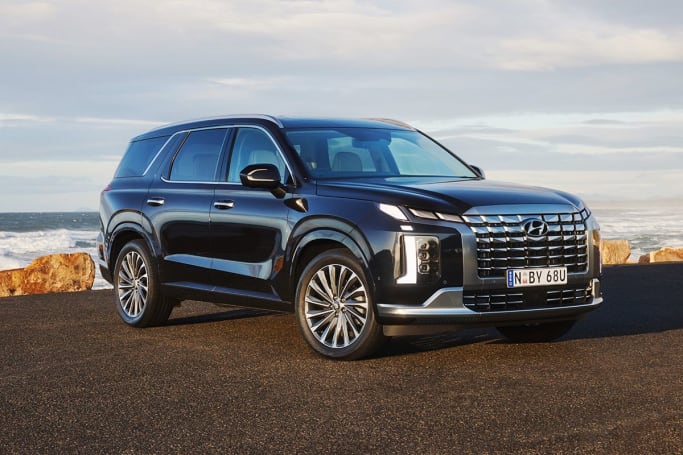
If you’re considering a large car, really look at the safety specs and make sure it has a good camera system as this will make your like A LOT easier when it comes time to park.
It’s also a good idea to make sure all occupants will have airbag coverage. Not all cars with three rows have coverage for those in the third row.
Other top safety features which are always good in a larger car are: rear (and front is a bonus) cross-traffic alert, blind-spot monitoring, forward collision warning and child rear occupant alert.
If you’re considering a car that has a sliding back door, look at whether it’s completely manual or if it's electric. You won’t want to deal with broken fingers if you ever park on a hill and the door gets away from you (or worse, your kids).
It would be worth noting how easy it is to fit your car seat, if you have one, and whether the boot has enough storage space for your gear.
A top tip would be to bring the most commonly carried items in your boot with you to the dealership. Test it out in real life. How easy it is it, slinging your pram into the boot?
And remember, large doesn’t immediately translate to SUV or van. Wagons have dropped off in popularity as the era of the SUV was ushered in but don’t discount them. They offer the same practicality of space but with the agility and handling of sportier sedans.
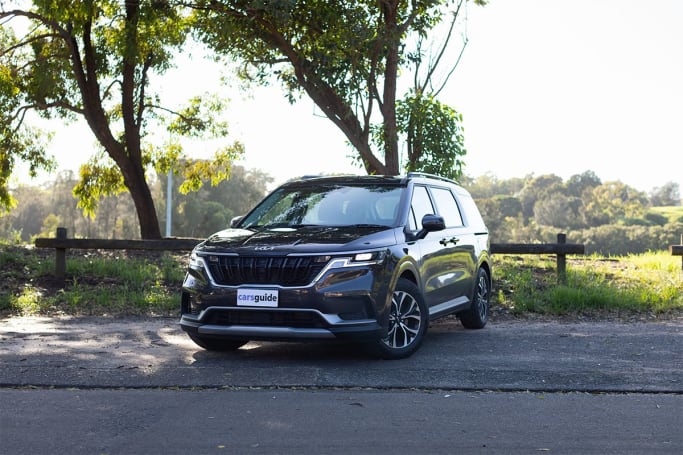
Ah, the sort of vehicles that used to be dubbed the ‘soccer mum’ car. These are the cars that your team mate’s carer would pick you up and take you to the match in.
They used to be big and rather unwieldy, think of the old school Toyota Tarago, but nowadays they’re constantly being updated into sleeker and, dare I say it, sexier packages.
If you’re considering a people mover, then you have a lot of people to move. You should consider the amenities in each row as not all seven-seaters are built the same.
Some third rows are forgotten when it comes to directional air vents, climate control, charging (USB ports) and just sheer space.
Will you be transporting older teens or adults in the middle and third rows? If so, consider whether they’ll be comfortable and have enough space or whether those seats will be reserved for short trips.
Another thing to think about is access. Is it easy to get into the third row? If the middle row is tied up with car seats, are you scrambling in from the boot? Do you need top tether anchor points in the third row and if not standard, can they be fitted at the dealership?
Safety should always be considered but check if the curtain airbags extend to the third row. It would also be prudent to see if the car has a good camera system and parking sensors. It can be difficult to park a bigger car without these and they will aid in situational visibility considerably.
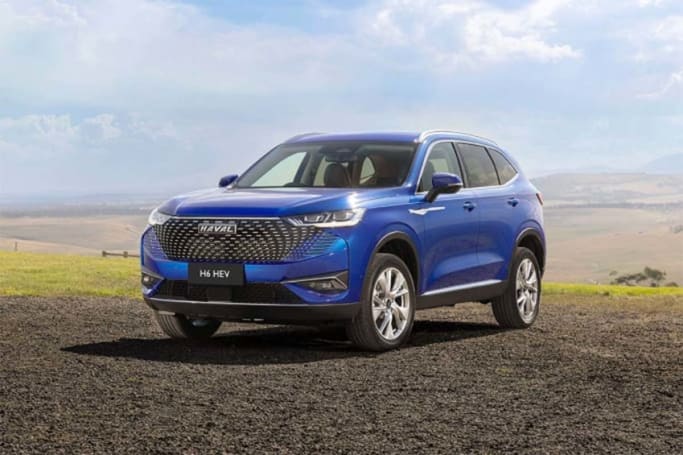
Best value can mean different things to different people. For me, the best value comes from not just looking at the purchase price but considering the long-term costs associated with your family car.
Start looking at the fuel economy. If you do mostly short city trips, don’t look at the combined cycle as you won’t be achieving that figure, look instead at the urban figure.
Next, look at the warranty period and capped-price servicing period. Five-years/unlimited km warranty is pretty standard for most classes, as is, five-years capped priced servicing terms. So, longer terms should offer better value for you (and your pocket).
Also, take a look at servicing intervals. The average is usually every 12 months/15,000km but some cars get serviced every 10,000km and if you put above average kays on your car every year, you’ll start chewing more into your pocket in the long run.
New cars should have a decent features list as standard, or at least up-to-date technology inside. The technology should be easy to use and simple to operate. If it’s not and you’re annoyed every time you use it, you’ll end up trading-in and spend more money in the long term.
Another thing I would consider, but wouldn’t necessarily deter me from a car, would be its resale potential. Does the car you’re looking at drop significantly in price on the second-hand market after only a short time? If so, is it worth the price you’re paying for it or is there something similar with better staying power?
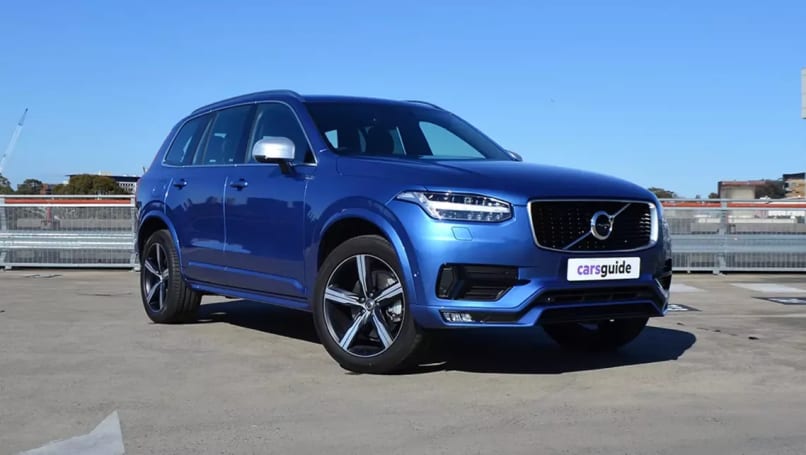
If it’s a luxury car than it should have luxury features. Think heated and ventilated seats, panoramic sunroof, panoramic camera system, premium sound systems… think big and expect bigger.
Luxury cars usually, but not always, translate to higher servicing costs and initial purchase price so be sure you’re happy with the feature list and try to negotiate extras if you can (like extended warranty or lock in capped-price servicing).
While the features list may seem exhaustive, don’t get too wrapped up in the glamour of them. You can have all of the features in the world but if the car doesn’t drive well or if you can’t store a pram without scratching the boot lip, then you’ll start to resent your new wheels.
Like any family car, make sure it fits the family and your athletic pursuits and/or travelling companions (like the family pet).
Consider if all rows get luxury features too or if it’s all in the front. This is something to think about if you have older kids or you’re frequently transporting your in-laws. Will they be comfortable and feel looked after too?
I would also do some research to see what the resale prices are for similar models after a few years because most of the time, you’ll be upgrading or trading-in at some point. Are you going to get enough bang for your buck when it’s time to sell?
A big point, for me at least, is how are you treated at the dealership when you come in for services? Because, not all luxury brands extend the same level of service.
Some make you feel that they want you in and out as quickly as possible, others, treat you like royalty. When you’re spending the dosh, you want to be looked after, otherwise, the experience of the car may sour for you.

An SUV should be able to stow your gear, carry you and your kids comfortably and meet your recreational pursuits with enough gumption that you’re not wondering why you’re bothering doing them in the first place.
As with the seven-seater considerations, look at the safety specs. In particular, the airbags. Are all rows covered by them or is the third row forgotten?
With a big SUV, you should look at its camera systems and whether it has rear cross-traffic alert, blind-spot monitoring and anything else that will make moving a big car around, that much easier.
If you need to tow a boat or trailer, check out the real-world towing capacities and whether there are any additional safety features (extra cameras, assisted braking) that can be included with the towing kit.
If it’s a 4WD, what is it like off-road? Check out our AdventureGuide reviews to get first-hand feedback.
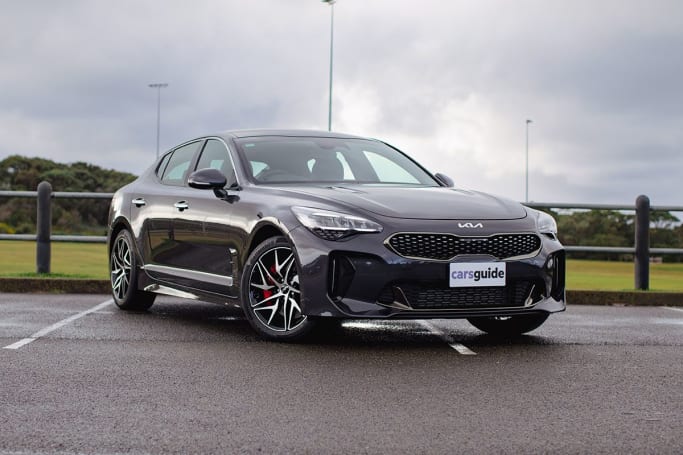
Well, the driving performance should be pretty high on your list of considerations. And not just if it has enough power but does it feel stable on the road when you put your foot down?
Is there too much torque, how does it handle bends? I’m imagining you probably have older children BUT if you have younger kids consider the height of the car and the apertures of the doors. Is it comfortable to bend down to strap them in? Imagine doing that every day, are you still happy with your findings?
Since it’s a family vehicle, even if it’s a second car, I’d be seriously considering the safety features. Sportier cars can have narrower windows and visibility – what’s the blind-spot monitoring like? Does it have AEB with pedestrian and cyclist detection? How many airbags and are they positioned to cover all the occupants? And a good camera system – reversing and front, if possible, can make a world of difference when it comes time to park it.
A sports car isn’t usually synonymous with space, so make sure your regular gear can fit in the boot. I’d be looking at the ongoing servicing costs and costs of the sportier extras (run-flat tyres, anyone?), see if you can get the servicing costs locked in at purchase time.
Another consideration that I’ve mentioned before is the servicing experience. Are you treated like royalty or not even looked at while you’re there? No matter the purchase price you should be treated well but poor customer service can feel more pronounced when you’ve outlaid a lot of money on the car.

With the fast-paced evolution of technology seemingly making things almost redundant as soon as they come out, I’d nevertheless expect my new family car to have good tech and family orientated features that will make my life easier.
Think easy compatibility/connection with the Apple CarPlay/ Android Auto, wireless charging pads, built-in sat nav, USB ports throughout the car, and good safety features.
Safety features like: child rear occupant alert, safe exit assist, electric child locks, rear and front cross-traffic alert, blind-spot monitoring, centre airbag and additional airbags covering the middle and third rows.
There, hopefully, should be some handy features that will make your day feel easier, like: powered tailgate with kick function, remote start, adaptive cruise control, amenities in the middle and third rows (think, snack trays, device holders and retractable blinds).
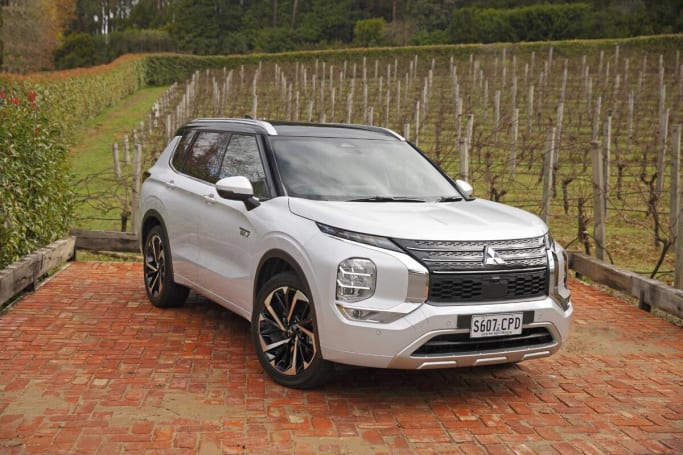
Practical but fun should be your guiding words. You want something that won’t make you feel like a nanna when you drive it but is large enough to fit your gear while also future-proofing for a growing family.
A young family often has bigger things to fit, like a pram, rearward facing child seats, nappy bags, portable cots and playpens.
So, will they fit in the boot? Are you able to throw the nuggets and gear in but also feel comfortable up front, too, when you’re driving on your family road trip to grandmas?
A big consideration for a young family is ongoing costs. Look at the benefits of longer warranty periods and capped-price servicing, they’ll make it easier to budget the yearly expenses.
Good fuel economy should be considered, too. You may be able to afford the big bruiser SUV but can you afford the weekly pump at the bowser?
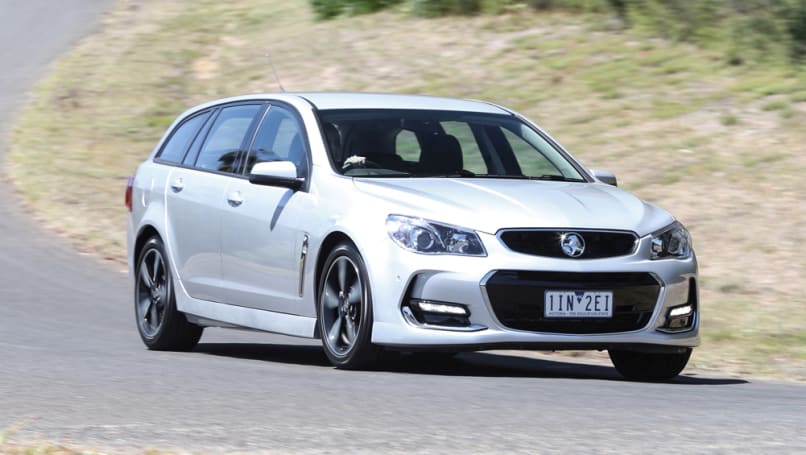
Second-hand doesn’t mean lower quality, or at least, it shouldn’t. To ensure you get the best second-hand family car, do your research.
Is the car you’re looking at relatively new but has had a lot of owners? If so, there may be a reason and it may be a lemon.
Check that the logbooks have full-service history and whether or not there’s any warranty and/or capped-price servicing terms left.
Check for heavy wear and tear on the interior and gauge whether it’s fair for the vehicles age. If it looks tired on the dealer's forecourt, it’ll look worse once it’s home.
It also means its previous owners were a bit rough with it and that may extend to how it’s been looked after all around.
It’s not a bad idea to check for damage and not just obvious signs of wear or tear but look for dimpling in the paintwork that could indicate storm damage.
Ask the dealer and check the logbooks to ensure any recall repair work has been completed. And checking out an older 4WD? Get a mechanic you trust to check out the undercarriage for anything amiss and look at the shocks/suspension, too.
And if you’re still in doubt and you don’t get a satisfactory answer from the dealer, walk away.
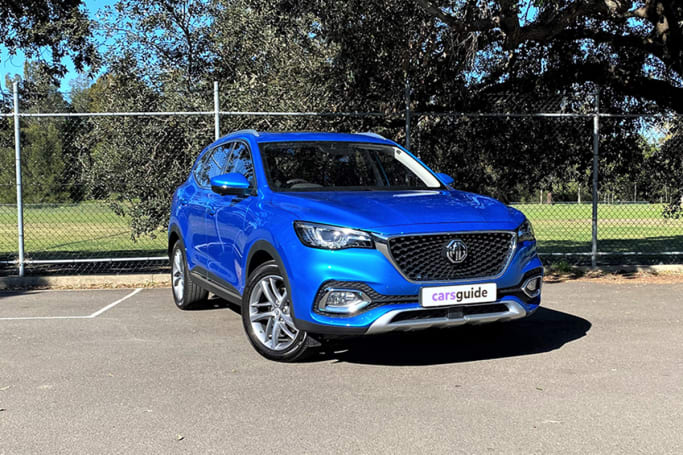
If it’s new, it should still have a healthy standard features list. Look for the entry-level models of the style of car you’re searching for.
Don’t be afraid to branch out into brands you don’t know much about (yet), but always do your research on the cars and user experience.
If forums explode with angry first-hand experience with the car you’re looking at, the cheap price tag may be covering up what might be an expensive journey in the long run.
And if you’re non-negotiable feature is a reversing camera, weed out the models that don’t have them and then compare your shortlisted cars spec sheets.
A good thing to consider is how easy it is to service and if they have servicing departments close to you. You may have negotiated a crazy capped-price servicing term but it’ll be annoying if you can’t service the car conveniently.
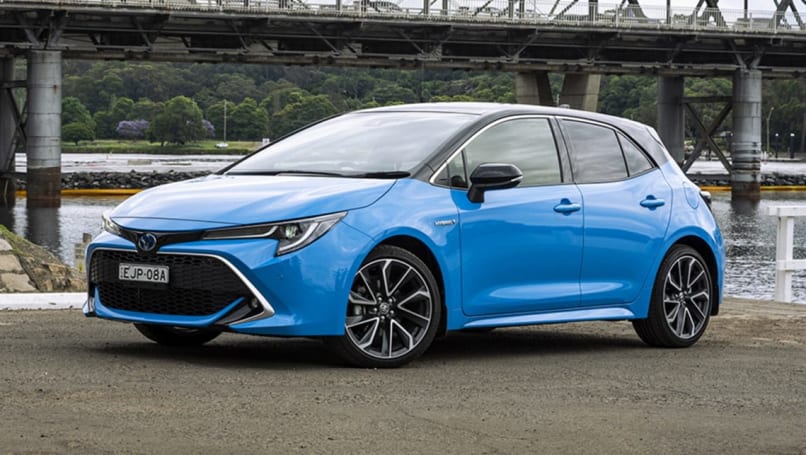
Looking for something that’s not going to hurt the wallet every week? Something that’s cheap to run can be tricky to find but your first step should be to look at its fuel economy. And a smaller car doesn’t necessarily mean better fuel economy, either.
Some hatchbacks can gurgle a lot more fuel than you expect. If you live in the city and do shorter trips, don’t get sucked in by the glamour of the ‘combined’ fuel cycle figure because you won’t see anything close to it. Instead, look at the urban fuel cycle figure because that will be closer to your economy.
There are an increasing number of hybrids on the market and the competition is creating healthier purchase prices, too, so don’t be scared to dip your toe in the electric energy game.
Just do your research because not every hybrid is built the same. Some manufacturers are a little cheeky and what they advertise as a hybrid is really a ‘mild hybrid’ and won’t do all that much for fuel economy.
Another point to consider is the capped-price servicing plans. Five years is pretty standard, so anything with more than this is pretty good.

In terms of popularity, sedans were overtaken by wagons and then SUVs, which have dominated the family car market ever since. BUT sedans make an excellent family car and they’re sort of the forgotten hero.
It’s not until you’re in one again that you remember the luxurious amount of space a lot of them have inside and I’m talking about some limo evoking space in backseats that you just don’t get in an SUV.
Having said that, there are sedans and there are sedans. Some can just be a stretched hatchback (old Toyota Corolla, anyone?) but others have the space inside and the boot to satisfy most discerning families.
It would be best to consider what you’re planning on using the car for. Will you have the space to fit the gear for your family's athletic pursuits? As each backseat configures differently and while some have the handy 40/20/40 split-fold, a lot of them don’t. Which may help with gear storage but not people stowage!
I’d also consider the height of the car, as sedans tend to be lower to the ground. You may be fine to do squats getting in and out but what about Granny, who you take to appointments every other day?
Also consider the apertures of the doors and how easy it is to get your kids in and out, especially if they’re still in child seats. Is it comfortable to bend down to strap them in? Imagine doing that every day, are you still happy with your findings?
Like all family cars, being happy with the safety sheet will be top priority. Look closely at the items that will help with visibility because you’re lower to the ground and sometimes sedans have narrower windows.
So, blind-spot monitoring, good camera system (bonus for 360-degree view), front and rear parking sensors, rear cross-traffic alert and forward collision warning are pretty good to have.
Comments